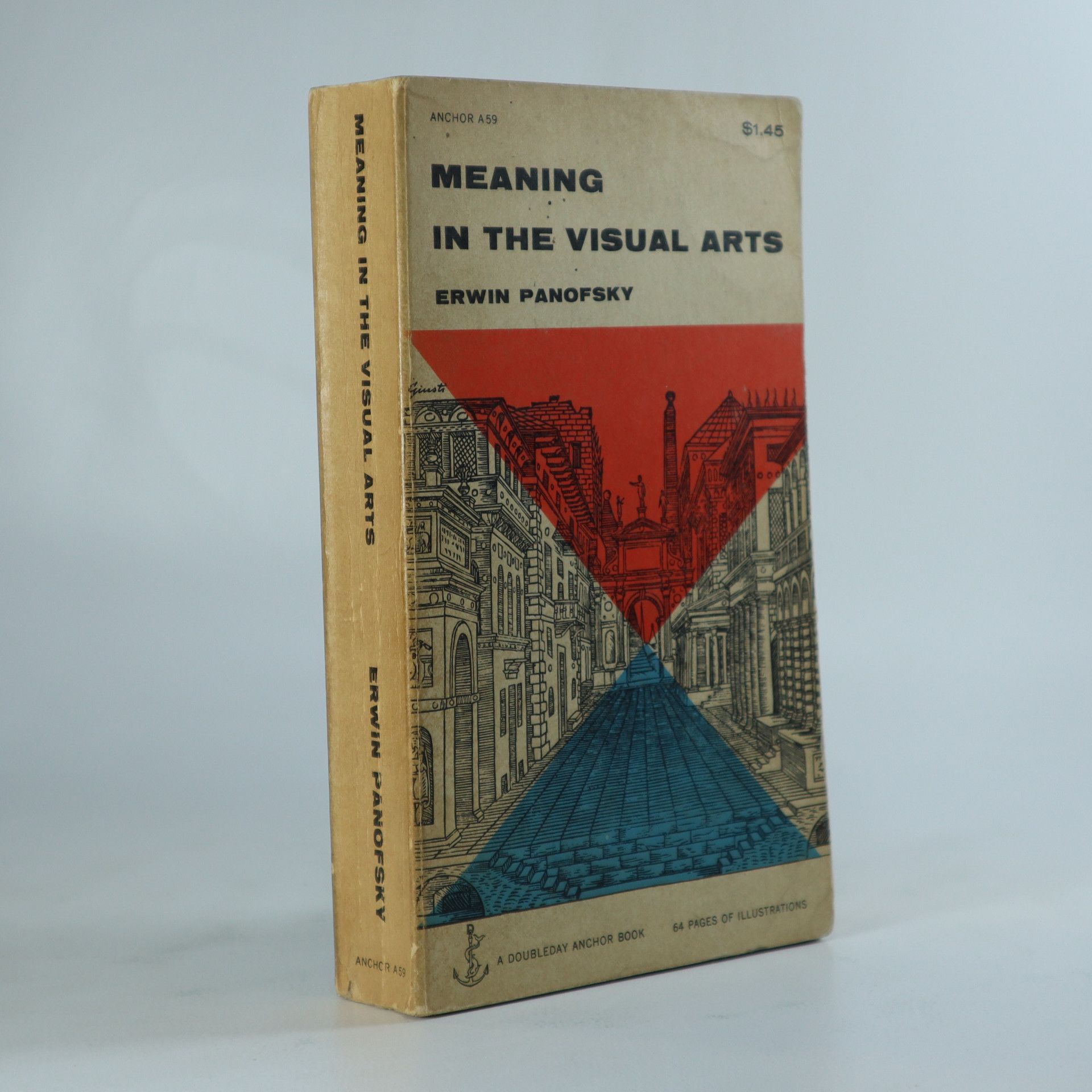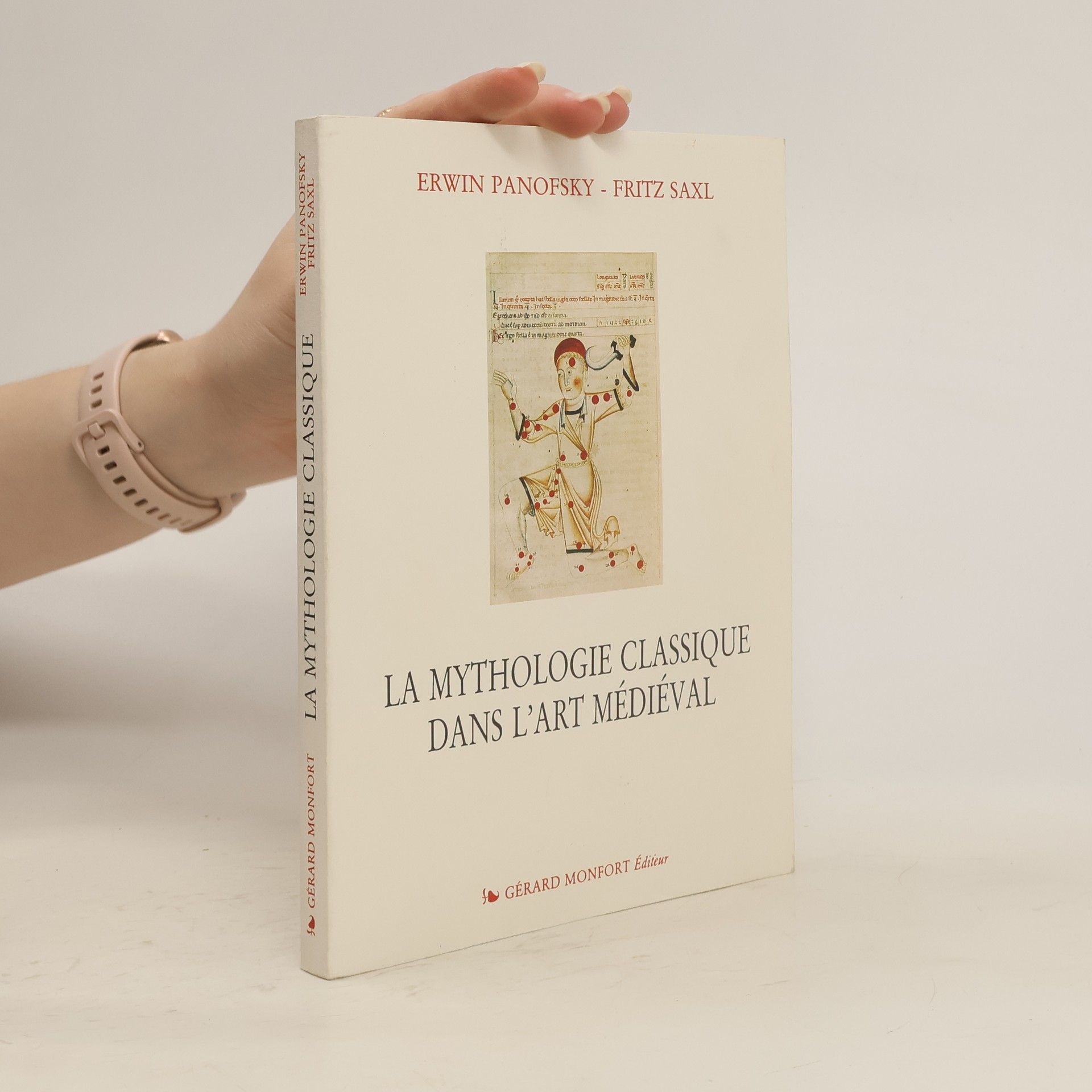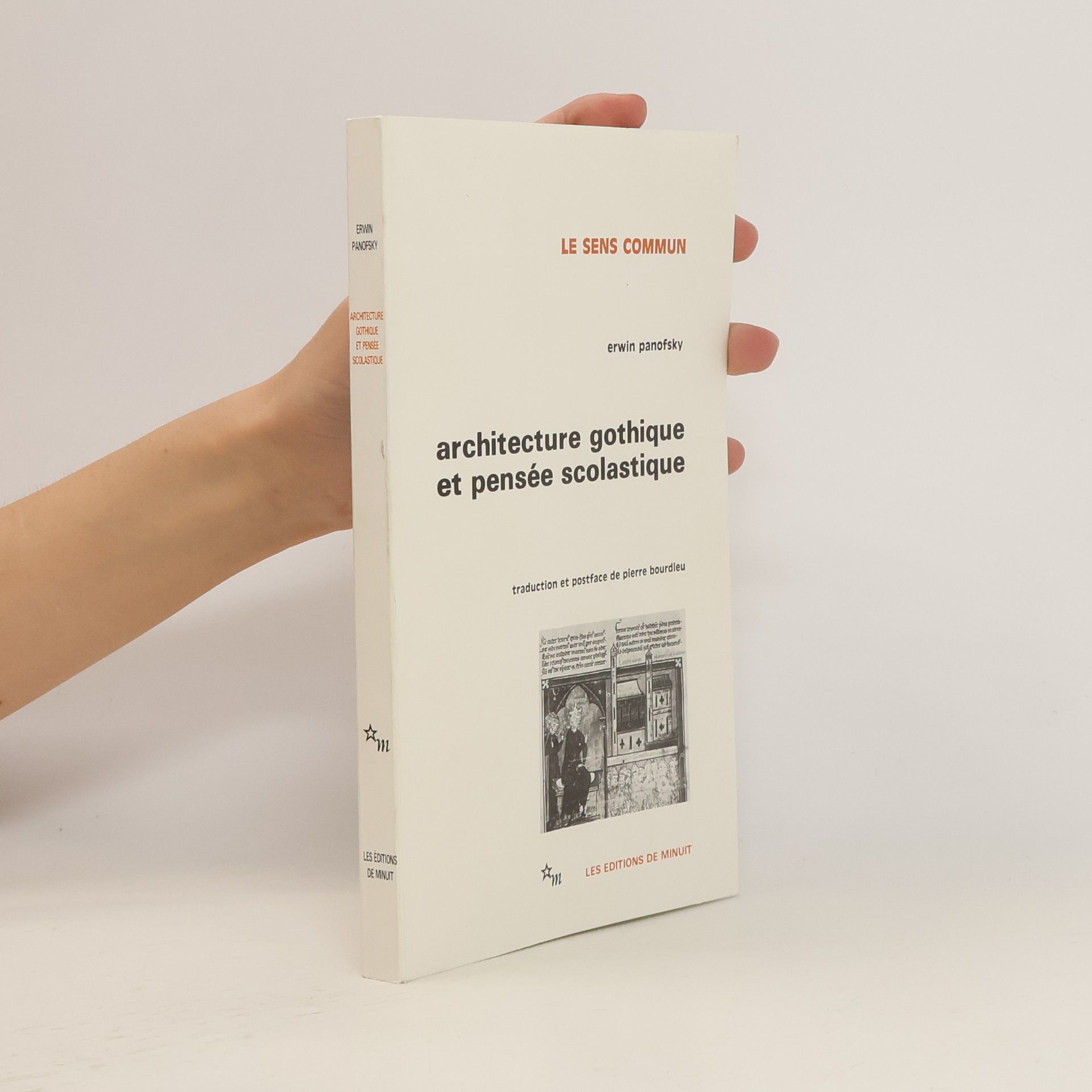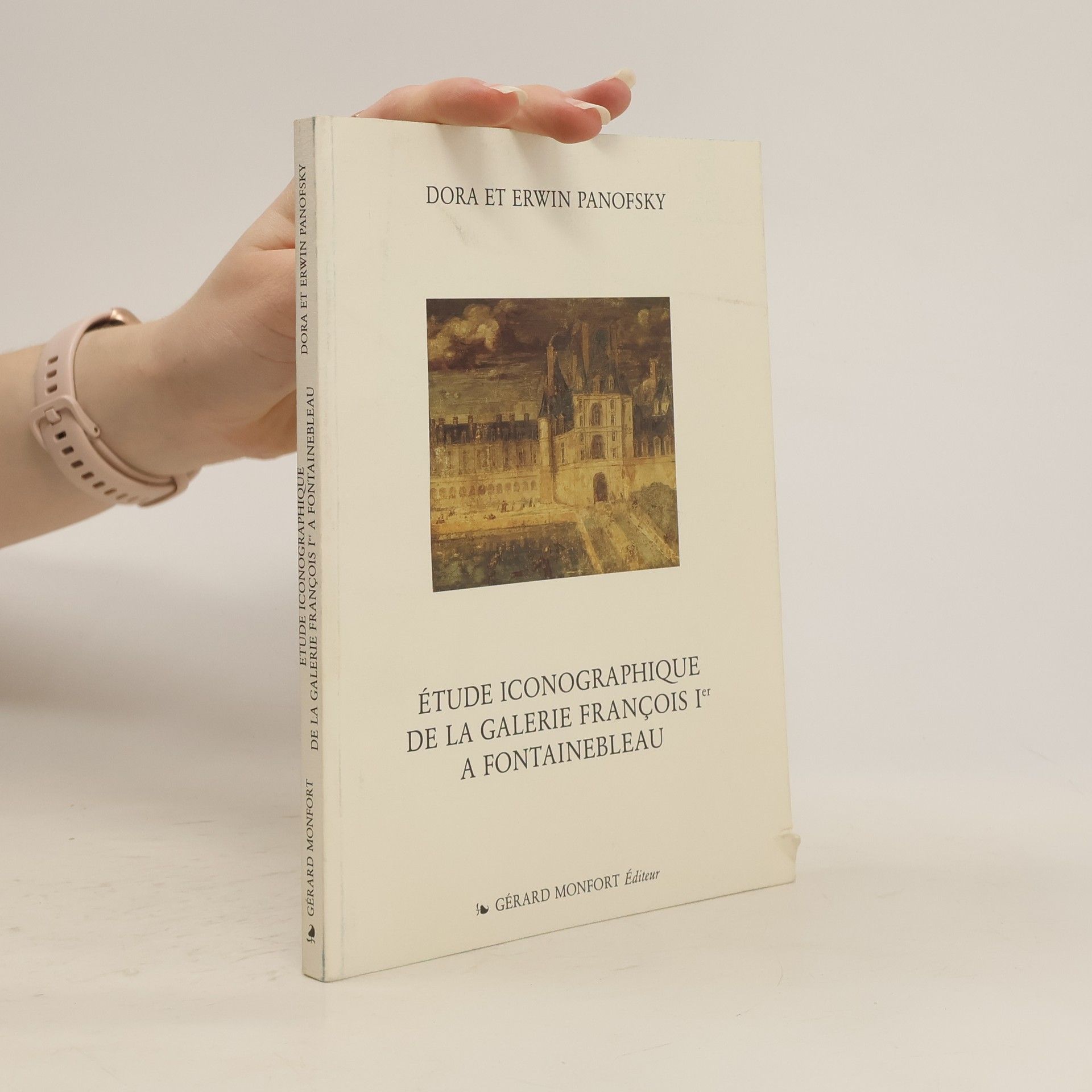Retrace la vie du peintre et graveur allemand, né à Nuremberg (1471-1528), qui exécuta plus de 600 peintures, eaux-fortes, gravures sur cuivre et sur bois et près d'un millier de dessins. Analyse son oeuvre religieuse et profane en commentant et resituant chaque oeuvre dans son contexte
Erwin Panofsky Livres
Erwin Panofsky fut un historien de l'art allemand dont la carrière universitaire s'épanouit aux États-Unis après la montée du régime nazi. Son travail a profondément marqué l'étude académique moderne de l'iconographie, explorant les thèmes humanistes dans l'art de la Renaissance et analysant des artistes tels qu'Albrecht Dürer. Les perspectives de Panofsky sur le sens et l'interprétation artistiques ont également influencé de manière significative les théories sociologiques contemporaines du goût et de l'habitus culturel.







Architecture gothique et pensée scolastique
- 216pages
- 8 heures de lecture
Les deux essais réunis ici proposent l’interprétation la plus méthodique de la genèse, de la structure et de l’évolution de l’architecture. gothique. Une biographie systématique rattachant les intentions esthétiques de Suger à différents traits de sa personnalité physique et sociale conduit au principe de l’entreprise de “ destruction créatrice ” de l’abbé de Saint-Denis qui laisse à ses successeurs, comme un défi, les difficultés suscitées par ses innovations. Pour relever ce défi, les architectes de la grande époque gothique s’arment des instruments intellectuels qu’ils doivent à la scolastique : ensembles intelligibles composés selon des méthodes identiques, la Somme théologique et la cathédrale recèlent des homologies structurales irréductibles aux simples traductions littérales de la langue théologique dans la langue architecturale que saisissait l’historiographie positiviste.
La mythologie classique dans l'art médiéval
- 143pages
- 6 heures de lecture
Peinture et dévotion en Europe du Nord
- 190pages
- 7 heures de lecture
Peinture et dévotion... rassemble huit études qu'Erwin Panofsky a consacrées à la peinture de l'Europe du Nord à la fin du Moyen Âge et au début de la Renaissance. Entre 1927 et 1956, de l'essai fondamental et jamais traduit, Imago Pietatis, à l'étude sur l'Ecce Homo de Jean Hey (alias le maître de Moulins), ce volume atteste la continuité d'un intérêt dont l'imposante synthèse des Primitifs flamands (1953) a constitué la somme et le résumé. On verra ici Panofsky au travail, élaborant dans les détails une interprétation iconographique et iconologique, répliquant à un contradicteur, reconstituant l'unité d'un manuscrit dispersé, identifiant le message privé discrètement adressé par Jan van Eyck à son commanditaire, etc. L'alliance de l'intelligence et de l'érudition fait toujours merveille. Les deux grands classiques que sont Imago Pietatis et l'Ecce Homo permettent de corriger et de compléter l'image progressivement fixée de l'iconographie panofskienne. L'auteur des Essais d'iconologie élabore ici une approche typologique et génétique très éloignée de ce à quoi on tend parfois à réduire sa pensée. Ces textes constituent un apport toujours actuel au débat théorique entre "histoire" et "science" de l'art.
Die Wirkung Erwin Panofskys auf das kunstgeschichtliche Denken des 20. Jahrhunderts ist enorm. Als Mitbegründer der Ikonologie entwickelte er eine der einflussreichsten Methoden zur Interpretation großer Kunstwerke. In dieser Sonderausgabe wird sein grundlegender Text, in dem er sein dreistufiges Interpretationsmodell erläutert, erstmals separat veröffentlicht. Panofskys Ansatz umfasst drei Stufen: Zunächst erfolgt die Beschreibung von Form und Gegenstand, wobei alltägliche Erfahrungen und Kenntnisse stilistischer Entwicklungen in der Kunst erforderlich sind. Darauf folgt die Analyse der dargestellten Bedeutung, die Kenntnisse von Textquellen, wie biblischen Attributen der Heiligen, voraussetzt. Schließlich wird der „Wesenssinn“ entschlüsselt, was zur ikonologischen Analyse führt. Hierbei verbindet der Betrachter das Gesehene mit allgemeinen kultur- und geistesgeschichtlichen Kenntnissen zu einer umfassenden Synthese. Panofskys Modell war bahnbrechend, da es ein konsequentes, logisches Vorgehen vorschlug, das Anschauung und historische Fakten vereint und somit die Grundlage für Begriffs- und Theoriebildung in der Kunstwissenschaft bildet. Die anschließenden Kontroversen um die Gültigkeit seines Analysemodells verdeutlichen seine scharfsinnige und weitblickende Herangehensweise.
Erwin Panofsky's Perspective as Symbolic Form is one of the great works of modern intellectual history, the legendary text that has dominated all art historical and philosophical discussions on the topic of perspective in this century. Finally available in English, it is an unrivaled example of Panofsky's early method that placed him within broader developments in theories of knowledge and cultural change. Here, drawing on a massive body of learning that ranges over Antique philosophy, theology, science, and optics as well as the history of art, Panofsky produces a type of archaeology of Western representation that far surpasses the usual scope of art historical studies. Perspective in Panofsky's hands becomes a central component of a Western will to form, the expression of a schema linking the social, cognitive, psychological, and especially technical practices of a given culture into harmonious and integrated wholes. Yet the perceptual schema of each historical culture or epoch is different, and each gives rise to a different but equally full vision of the world. Panofsky articulates these different spatial systems, demonstrating their particular coherence and compatibility with the modes of knowledge, belief, and exchange that characterized the cultures in which they arose. Our own modernity, Panofsky shows, is characterized by its peculiarly mathematical expression of the concept of the infinite, within a space that is necessarily both continuous and homogeneous.
Pandora's Box
- 199pages
- 7 heures de lecture
Pandora was the "pagan Eve," and she is one of the rare mythological figures to have retained vitality up to our day. Glorified by Calderón, Voltaire, and Goethe, she is familiar to all of us, and "Pandora's box" is a household word. In this classic study Dora and Erwin Panofsky trace the history of Pandora and of Pandora’s box in European literature and art from Roman times to the present.
Michelangelo's Design Principles, Particularly in Relation to Those of Raphael
- 408pages
- 15 heures de lecture
The rediscovery of Erwin Panofsky's manuscript reveals his in-depth thesis on Michelangelo, originally submitted in 1920 and thought lost. This work, now available in English, offers a comprehensive analysis of Michelangelo's artistic style, contrasting it with Raphael's, and situating both within the broader context of Western art. It highlights Panofsky's early intellectual development and reflects a pivotal moment in art history when formalist interpretations began to dominate over biographical analyses, providing fresh insights into the High Renaissance.

